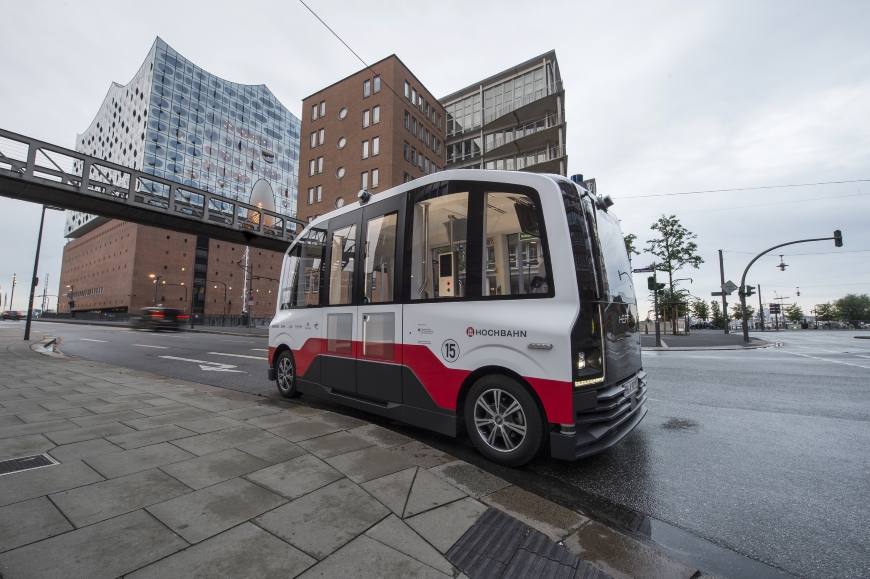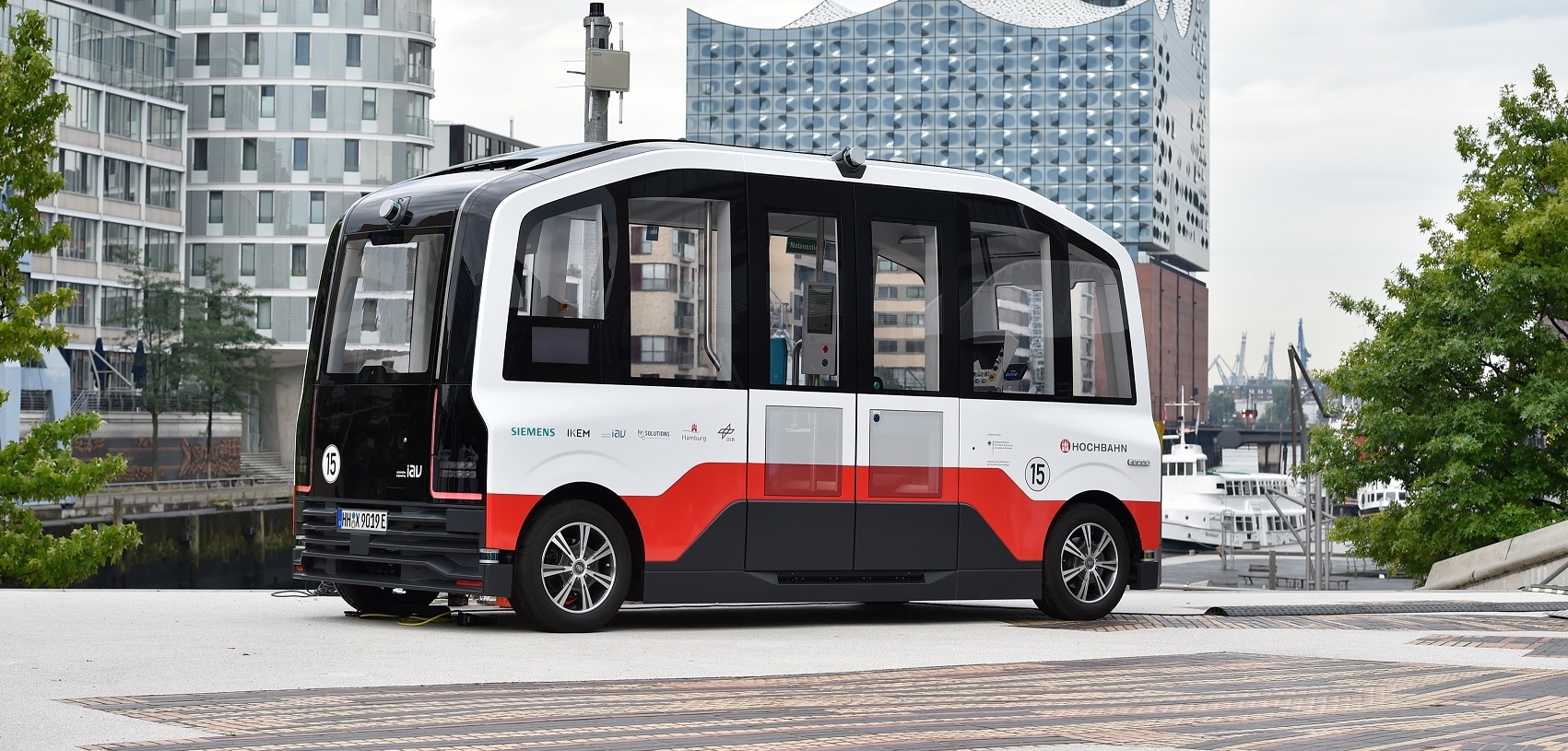
In mobility terms, perhaps the most influential development in recent years has been the speedy ubiquity of ride-hailing. Companies such as Uber, DiDi and Lyft fill the gaps that public transport cannot reach. But this comes at a cost, as many city authorities are finding out: cars cruising round for pick-ups tend to clog up the streets. While the picture is complex, research already suggests that ride-hailing contributes to vehicle miles travelled, and therefore increases congestion. The price of individual convenience is collective gridlock in some cases. Nobody really wins, in other words.
Siemens is pondering a solution to this conundrum. The group’s Operating Systems for Cities is aimed at enabling central management of traffic and connectivity across all modes, including trip planning, mobile ticketing and Mobility as a Service solutions.
Markus Schlitt, CEO of intelligent traffic systems at Siemens Mobility, suggests a logical way of helping to solve the issue is to give public transit operators the tools to be able to compete with ride-hailing platforms. “You need to enable your public transit operator to be able to offer better - or at least ‘as good’ - mobility services,” Schlitt (below) says.

Autonomous vehicles (AVs) have been mooted as a possible answer, but robo-taxis are no good because that simply takes people further away from public transport, “creating a lot of problems for a city – for instance, less ticket revenue which means more subsidy”, he adds.
First-/last-mile solution
Instead, Siemens’ answer is to offer self-driving minibuses as a first-/last-mile solution “in areas not connected to subways or other forms of mass transit” as a means of optimising the overall transport network. “Our customers, the public transport operators, will be able to realise the benefits offered by this new technology that will provide an additional and convenient public transportation option,” Schlitt explains.
The German company has two main customer segments: city authorities and public transit operators. There is a big link between them since much of urban public transport is owned - in part at least - or underpinned by cities. Siemens Mobility combines rail and road, and cities need a mobility operating system which will make the most out of the road and public transport network, across all modes. “With city authorities we experience a clear pull – it’s different from five years ago,” Schlitt insists.
New technology is key to all this. Siemens is one of several firms carrying out in-depth trials at Nanyang Technological University (NTU)’s Centre of Excellence for Testing and Research of AVs (Cetran) in Singapore. The testbed features a track which replicates various aspects of Singapore’s urban road conditions, such as traffic signals, dense traffic, multiple bus stops and pedestrian crossings. It can also simulate extreme weather conditions such as driving through heavy rain and partially-flooded roads.
However, Schlitt acknowledges that there are limitations to such environments, and that while they are a good copy of the real world they aren’t quite the same thing. Siemens is not pretending that its Cetran work proves AVs can operate in real-world traffic yet, although it is a very important means of trying things out which may later prove of use (see box). “Cetran is a protected environment,” Schlitt says.
Feeling the Heat
Instead he points to the Heat (Hamburg Electric Autonomous Transportation) project, in which his researchers are attempting to prove that an autonomous shuttle bus can be integrated into regular street traffic and into the city’s public transit system. The 5m long, electric-powered 3-tonne minibus can carry a maximum of 10 passengers with a targeted top speed of up to 50km/h.
“It’s not free-flowing yet,” acknowledges Schlitt. “It’s a 3km fixed track in the harbour area. But we have the proof of concept.” Siemens is not interested in providing the vehicles but the company’s intelligent infrastructure supports the Heat minibus, and – crucially - the company argues that the need for a safety driver disappears when the ‘digital bus driver’ gets a ‘second map’ out of sensors and data analytics from the infrastructure . This ‘2-out-of-2’ philosophy is copied from the rail automation world, Schlitt says.
The Hamburg experiment is designed eventually to prove that AVs can meld into ‘real’, everyday traffic with no need for a human guiding hand. “If you have the right infrastructure in place then you have the ‘second opinion’,” Schlitt says. “You can get rid of the safety driver. The self-driving bus system will be profitable due to significantly less operational expenditure over the lifecycle. It can be operated 24/7 with only few off-service periods for charging or maintenance.”
To put it another way, a bus is never sick – and it is not organised by unions: for authorities this seems attractive. But bus public transit is notoriously difficult to get right for all sorts of reasons – not least cost and, importantly, an often negative perception from potential users. This makes optimising the overall transport network a challenge. “Public transit bus services have issues,” admits Schlitt. “The quality of service is not the highest in a lot of cases. Also nearly none of them run profitably, so currently need subsidy.”
But giving people who are going in the same direction the ability, in effect, to ‘pool’ in an AV, agreeing on pick-up and drop-off points, with high occupancy, might be enticing. For it to work, such a service could not concentrate on the more lucrative districts to the exclusion of others. “People in less-travelled areas also need to go to work or go to the doctor,” says Schlitt. Fairness and access will be vital, especially as societies are ageing.
Pilot solutions
AVs are most likely to be seen first on highways, and there remain significant issues around weather conditions and tunnels, before you even get to concerns over their interaction with other road users. That being the case, the date when AVs are likely to be capable of driving on their own in city centre traffic is impossible to pin down: Schlitt suggests that somewhere between 2030 and 2035 is a reasonable estimate.
Speaking at the ITS World Congress in Singapore, Siemens Mobility CEO Michael Peter said the first pilot solutions could be running in cities in five years’ time. “We can’t develop AVs in our laboratories in Munich or Berlin,” he says, predicting that “serious applications” could be in use in cities in 10 years’ time and that the public “will accept a gradual approach…we have to be open”. The company is “confident” in the technology’s safety, Peter adds: “We have 100 years’ experience in making signalling systems safe.”
The considerations for bus passengers will be different to those who ride in cars. “If you sit in a robo-cab of Uber or Waymo, you have to belt up,” Schlitt points out. But if you’re on public transport there is no such requirement, which makes sudden stops a potential health hazard for passengers. “You don’t want an old lady flying over and hurting herself,” he says seriously. “You have to avoid emergency braking.” Part of Siemens’ work at Cetran deals exactly with this point, using Vehicle to Everything technology with on-demand AVs benefiting from traffic light-timing extensions to smooth passenger journeys.
There is, of course, a wider perspective to all this. The Volkswagen emissions scandal, global concern over climate change, congestion and pollution form the backdrop to the debate around urban transit and the rise of AVs. “We got a huge push out of the environmental discussion,” concludes Schlitt. “We want to live in the city and we want to breathe clean air.”
- This is an edited version of the Interview in the November/December issue of ITS International
Siemens’ ‘Apollo mission’ at Cetran
Siemens says its project in Singapore to connect AVs with intelligent road infrastructure has potential to benefit the wider mobility sector. At present the work exists at the test bed of Singapore’s Cetran AV testing facility at Nanyang Technological University (NTU).
But the island city-state’s restricted geography and unusual political situation – the national government is, in effect, also the local government, streamlining decision-making – raises a legitimate question over how transferable this will be to other cities and regions.
Talking to ITS International, Fred Kalt, head of Siemens Mobility ITS, Asia Pacific, acknowledges the debate over whether it was “a role model or a lighthouse project”.

But Kalt insists there would be wider learnings for the mobility industry, likening it to Nasa’s Apollo missions. “The world can benefit from what we’re doing here,” he says. “A lot of people benefitted from the technology to send people to the moon.”
At Cetran (left), Siemens is working with NTU for Singapore’s Land Transport Authority to demonstrate Vehicle to Everything (V2X) technology that includes on-demand AVs able to deal with pedestrians in the roadway and traffic light-timing extensions to smooth passenger journeys. Singapore has ambitious plans for AVs in its transit ecosystem, pledging to deploy island-wide autonomous buses and shuttles by 2030.
While Siemens says that “millions” of simulations have taken place using advanced software to collect massive amounts of data along with the work at Cetran, there is no timetable for putting the technology into practice on Singapore’s streets.
“We are using standard products to complement this other information,” says Michel Obadia, CEO of Siemens Mobility Asia Pacific. “This will happen step-wise, as we develop use cases.”












